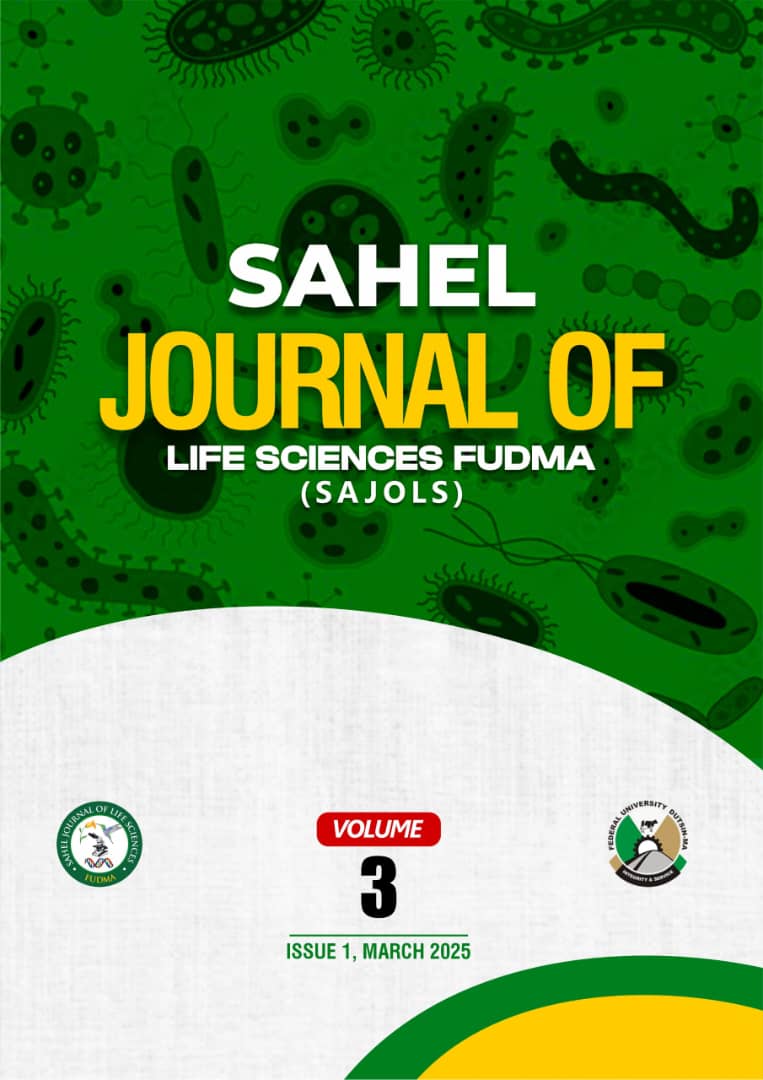Glycine max Seed Protein Hydrolysates: Antiglycation Potentials and Inhibition of Carbohydrate-hydrolyzing Enzymes
DOI:
https://doi.org/10.33003/sajols-2025-0301-70Keywords:
α-amylase, α-glucosidase; Antiglycation; Soybean; Proteolysis; HydrolysatesAbstract
The present study explored the inhibitory effects of hydrolysates of Glycine max seed protein on α-amylase, α-glucosidase, and protein glycation. Proteins were extracted from Glycine max seeds via alkaline solubilization followed by isoelectric point precipitation. The proteins were then hydrolyzed using trypsin, chymotrypsin, and a combination of both enzymes in equal proportions. The resulting hydrolysates were evaluated for bioactivities against α-amylase, α-glucosidase, and albumin glycation. The results revealed that all hydrolysates inhibited albumin glycation (above 70% inhibition), with tryptic hydrolysates having the best activity. All hydrolysates displayed varying inhibitory effects on α-amylase and α-glucosidase, with hydrolysates obtained from dual-enzyme proteolysis eliciting better activities (77.06 ±0.73% and 71.489 ±3.489% against α-amylase and α-glucosidase, respectively) than hydrolysates from single enzyme digestion. Kinetic data indicated that chymotrypsin digests inhibited α-amylase via an un-competitive mechanism while tryptic hydrolysates and dual-enzyme digests exhibited mixed mode of inhibition, with tryptic hydrolysates having the lowest binding affinity (kI = 0.508 mg/mL). For α-glucosidase inhibition, an uncompetitive subtype of mixed inhibition was observed for tryptic digests, whereas mixed-enzyme derived hydrolysates inhibited α-glucosidase non-competitively. Mixed inhibition was obtained for chymotrypsin hydrolysates, and they had the lowest binding affinity for α-glucosidase (kI = 0.250 mg/mL). The study concludes that the enzymatic digestion of proteins from soybean seed yielded bioactive peptide products that may possess antidiabetic capacities, via inhibition of carbohydrate-degrading enzymes and slowing down protein glycation. It is suggested in further studies that these hydrolysates are fractionated and sequenced to identify actual peptides responsible for these effects.


